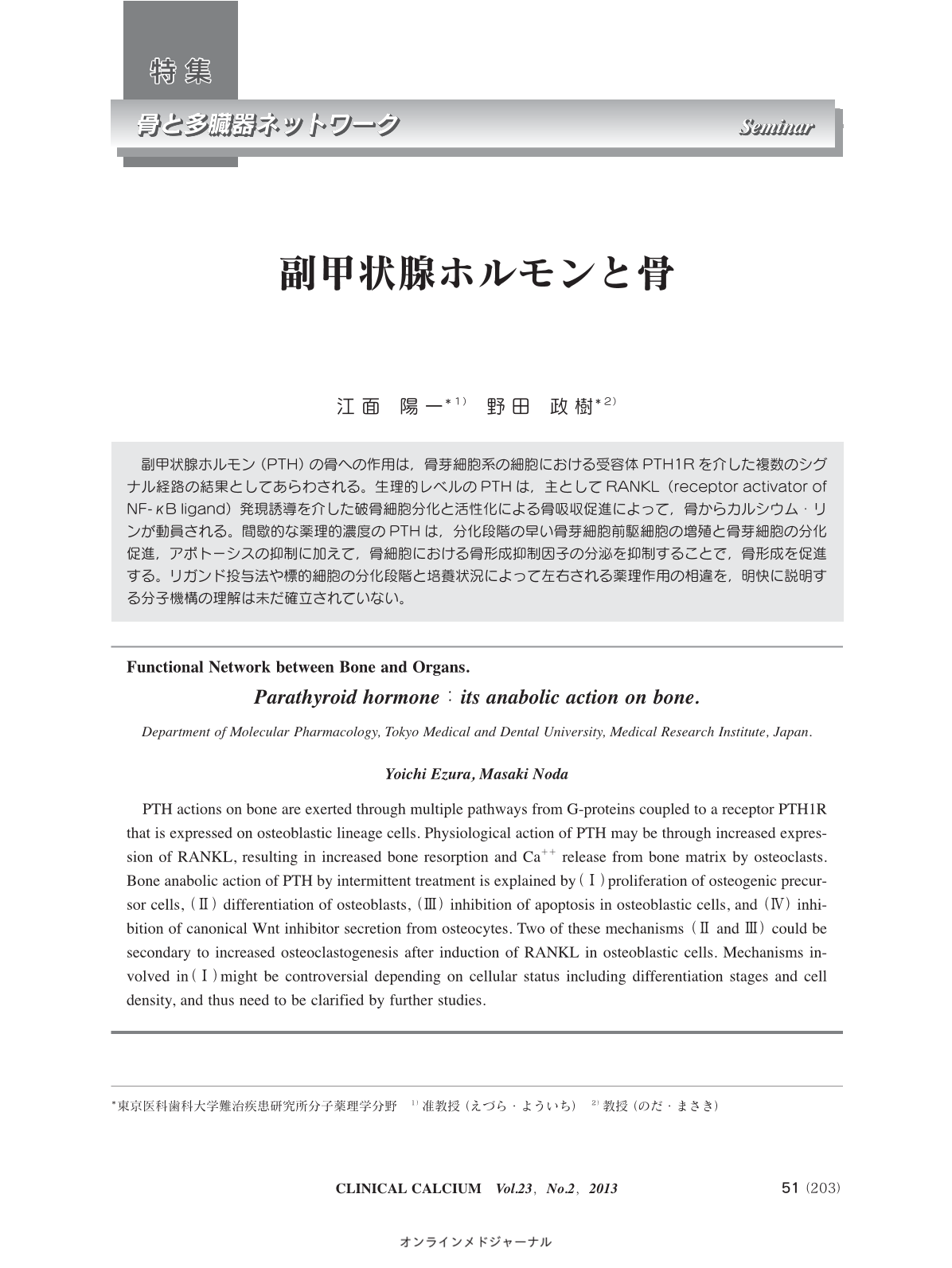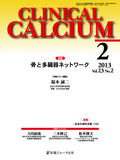Japanese
English
- 有料閲覧
- Abstract 文献概要
- 1ページ目 Look Inside
- 参考文献 Reference
副甲状腺ホルモン(PTH)の骨への作用は,骨芽細胞系の細胞における受容体PTH1Rを介した複数のシグナル経路の結果としてあらわされる。生理的レベルのPTHは,主としてRANKL(receptor activator of NF-κB ligand)発現誘導を介した破骨細胞分化と活性化による骨吸収促進によって,骨からカルシウム・リンが動員される。間歇的な薬理的濃度のPTHは,分化段階の早い骨芽細胞前駆細胞の増殖と骨芽細胞の分化促進,アポトーシスの抑制に加えて,骨細胞における骨形成抑制因子の分泌を抑制することで,骨形成を促進する。リガンド投与法や標的細胞の分化段階と培養状況によって左右される薬理作用の相違を,明快に説明する分子機構の理解は未だ確立されていない。
PTH actions on bone are exerted through multiple pathways from G-proteins coupled to a receptor PTH1R that is expressed on osteoblastic lineage cells. Physiological action of PTH may be through increased expression of RANKL, resulting in increased bone resorption and Ca++ release from bone matrix by osteoclasts. Bone anabolic action of PTH by intermittent treatment is explained by( I )proliferation of osteogenic precursor cells,( II )differentiation of osteoblasts,( III )inhibition of apoptosis in osteoblastic cells, and( IV )inhibition of canonical Wnt inhibitor secretion from osteocytes. Two of these mechanisms( II and III )could be secondary to increased osteoclastogenesis after induction of RANKL in osteoblastic cells. Mechanisms involved in( I )might be controversial depending on cellular status including differentiation stages and cell density, and thus need to be clarified by further studies.



